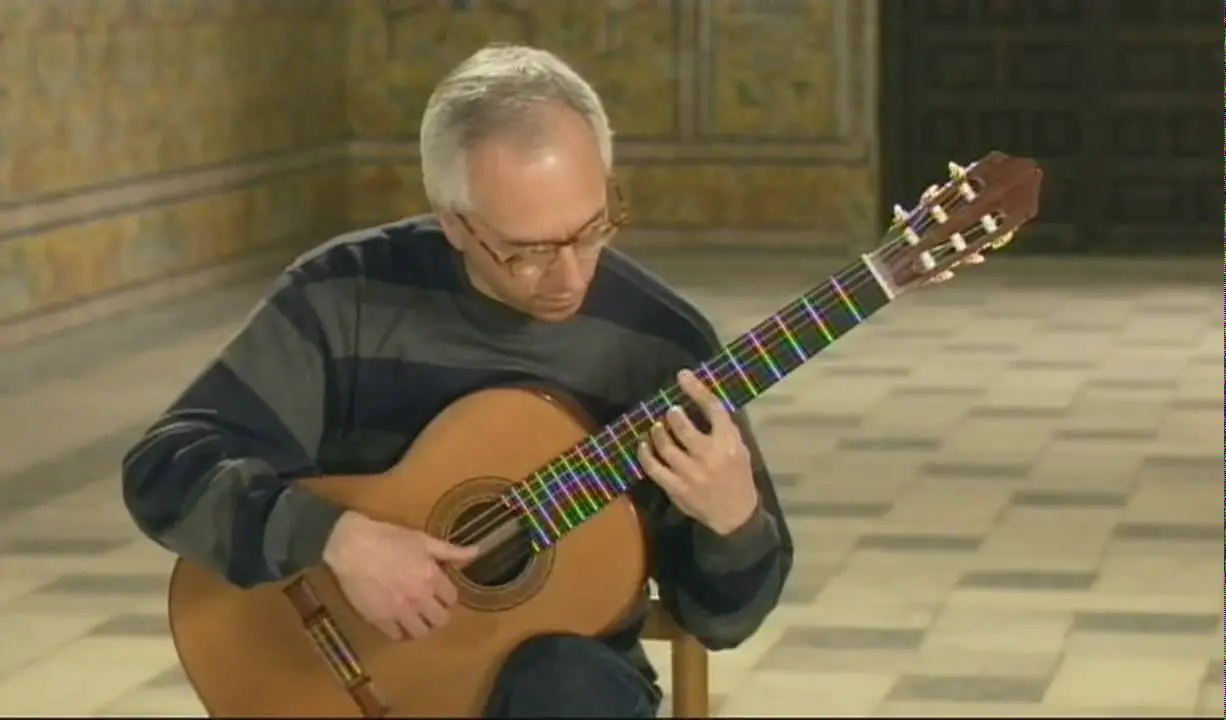Asturias (Leyenda) is a musical work written by the Spanish composer Isaac Albéniz. It was originally written for the piano and set in the key of G minor, and first published in Barcelona, by Juan Bta. Pujol & Co., in 1892 as the prelude of a three-movement set entitled Chants d’Espagne. Here it is played by John Williams inside the Reales Alcázares in Seville, Spain.
John Williams
John Christopher Williams AO OBE (born 24 April 1941) is an Australian virtuosic classical guitarist renowned for his ensemble playing as well as his interpretation and promotion of the modern classical guitar repertoire.
To say anyone is the best guitarist in the world is impossible to qualify, but John Williams has played and recorded every major work in the guitar repertoire, and if anyone were to make such a list to state a claim, I believe, one would have to put John Williams on that list.
Guitar historian Graham Wade has said that “John is perhaps the most technically accomplished guitarist the world has seen.”
And here is the 1975 version below, played by John Williams.
Asturias (Leyenda)
Asturias (Leyenda), named simply Leyenda by its composer, is a famous musical work by the Spanish composer and pianist Isaac Albéniz (1860-1909).
The piece was originally written for the piano and set in the key of G minor. It was first published in Barcelona, by Juan Bta. Pujol & Co., in 1892 as the prelude of a three-movement set entitled Chants d’Espagne (English: Songs of Spain).
The name Asturias (Leyenda) was given to it posthumously by the German publisher Hofmeister, who included it in the 1911 “complete version” of the Suite Española, although Albéniz never intended the piece for this suite. Despite the new name, this music is not considered suggestive of the folk music of the northern Spanish region of Asturias, but rather of Andalusian flamenco traditions.
Leyenda, Hofmeister’s subtitle, means legend. The piece is noted for the delicate, intricate melody of its middle section and abrupt dynamic changes.
Albéniz’s biographer, Walter Aaron Clark, describes the piece as “pure Andalusian flamenco” with a main theme that mimics the guitar technique of alternating the thumb and fingers of the right hand, playing a pedal-note open string with the index finger and a bass melody with the thumb. The theme itself suggests the rhythm of the bulería – a song from the flamenco repertoire. The ‘marcato’/’staccato’ markings suggest both guitar sounds and the footwork of a flamenco dancer. The piece sounds as though it is written in the Phrygian mode which is typical of bulerías.
The second section is reminiscent of a copla – a sung verse following a specific form. Clark states that it is written in typical Albéniz form as it is “presented monophonically but doubled at the fifteenth for more fullness of sound. The music alters between a solo and accompaniment that is typical of flamenco. The short middle section of the piece is written in the style of a malagueña – another flamenco-style piece. The malagueña borrows two motives from the previous copla and builds on them. The piece returns to its first theme until a slow “hymn-like” passage ends the piece.
Many have attributed the first transcription for the guitar to Francisco Tárrega who put it in its most recognizable key, E minor. According to guitarist and guitar scholar Stephen Yates, the first guitar transcription of the piece was probably by Severino García Fortea, although Andrés Segovia’s transcription is the most famous and most influential. The piece has become one of the most important works of the classical guitar repertoire.
Sources
- Asturias (Leyenda) on Wikipedia
- Isaac Albéniz on Wikipedia
- John Williams on Wikipedia



